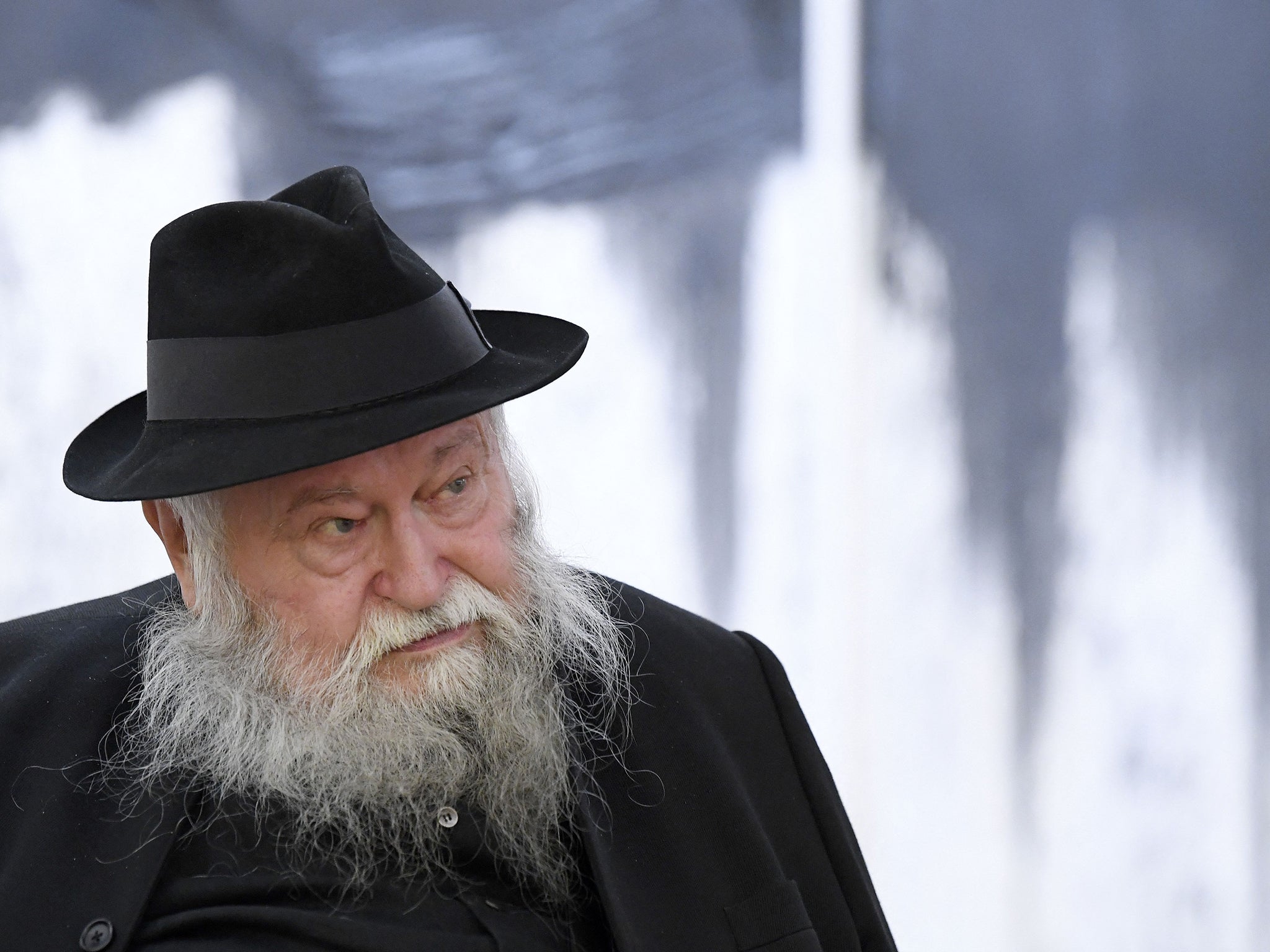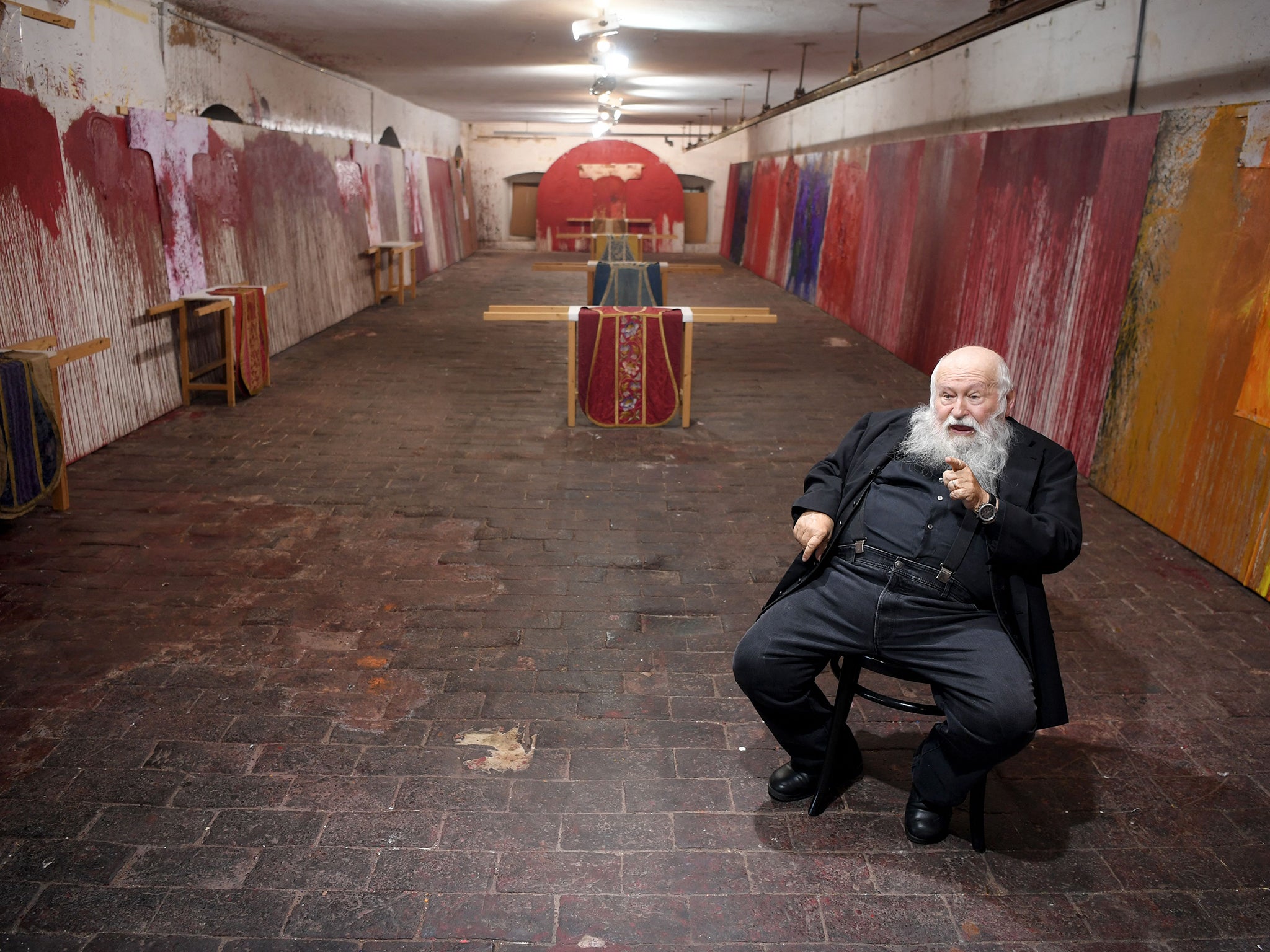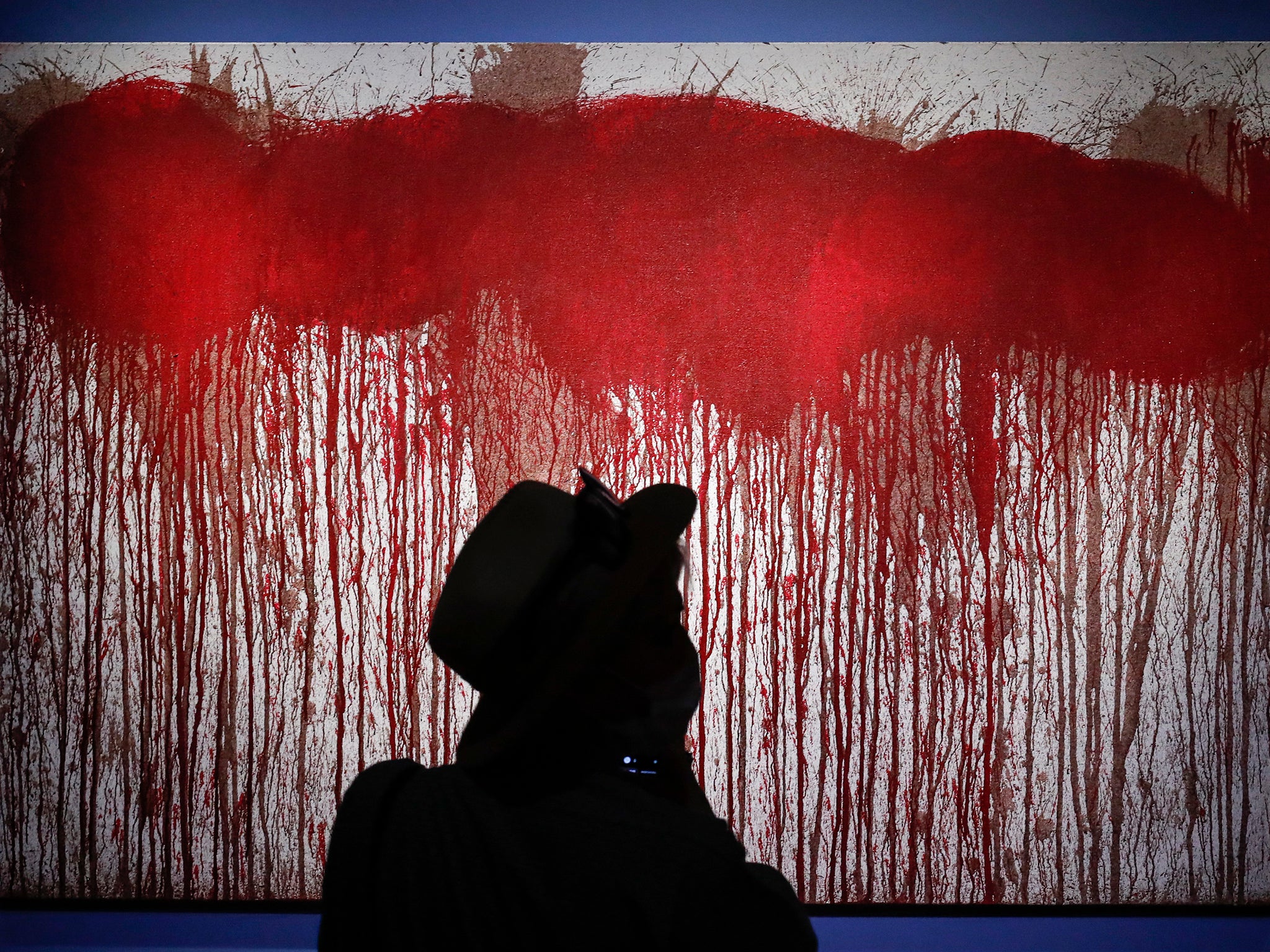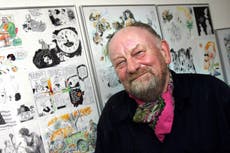Hermann Nitsch: Controversial artist known for his blood-soaked creations
The Austrian avante-gardist used everything from slaughtered animals to mock crucifixions to explore the ‘colourfulness of death’

Hermann Nitsch, a leading artist of the Austrian avant-garde whose blood-splattered canvases and ritualistic performances involving animal slaughter and crucifixion sparked scandal and sensation in the art world for more than half a century, has died aged 83.
Nitsch grew up during the destruction and deprivation of the Second World War and developed early on a transgressive concept of art – one that reached beyond even the most experimental visual experience to include sensory stimulation such as the wails of a screaming choir, the fragrance of burning incense and the slick sensation of animal innards.
“I am everything at once: painter, poet, theatre maker, musician, lyricist and sculptor,” he once told the Associated Press. “I think that art as such is absolutely free, especially in terms of how the artist chooses to realize it ... The splendour and colourfulness of death correspond to the colourfulness of life.”
Nitsch became a leading exponent of Viennese Actionism, an art movement that emerged in the 1960s from the traditions of Surrealism and Dada and attracted attention around the world for its often graphic displays of performance art.
Nitsch staged events known as “actions” that drew on pagan and Christian rites with the purpose, he said, of laying “bare the origins of the creation of sadomasochistic myths”.
In one action, Nitsch disembowelled and dismembered a lamb. In another, an actor reenacting the crucifixion was drenched in the blood of a slaughtered bull. Another simulated castration.
“Overcoming the revulsion barrier,” the The Daily Mail quoted him as saying, “is a task of art.”
In his canvases, Nitsch used materials including blood and pig entrails in addition to acrylics. During public performances in which he doused his “poured paintings” in blood-like red paint, the audience “experienced an artist-priest or priest-artist who celebrated the production process of the claimed art like an unholy mass,” a writer for the German newspaper Die Welt wrote after Nitsch’s death.
Nitsch saw his life’s work, beginning in the late 1950s and continuing until his death, as combining to form what he termed the Orgies Mysteries Theatre. Every part of his actions was meticulously scripted, with Nitsch composing the aural elements, which included Gregorian chants and noise orchestras.

“Mr Nitsch is an artist for whom excess is not a dirty word, and the idea of the total work of art, in which walls between disciplines, categories of response and anything else are attacked, is very much alive,” art critic Michael Brenson wrote in The New York Times in 1988.
The most dramatic instalment in his opus was a 1998 staging of a six-day play involving 500 participants and, according to the Associated Press, “13,000 litres of wine, hundreds of litres of blood, [kilograms] of grapes and tomatoes, several animal carcasses and musical accompaniment.”
It aimed “to be the greatest and most important celebration of peoples,” Nitsch said. “It is an aesthetic ritual glorifying existence.”
Nitsch’s actions prompted protests by animal rights activists including the French actress Brigitte Bardot, who denounced him as a “barbarian master of horror” and the six-day play as a “satanic spectacle”. Nitsch was repeatedly arrested and was at one point expelled from Italy.
“I was kind of proud of that,” the publication ARTnews quoted him as saying. “My work agitated the people, and I saw myself in the same league as other great misunderstood artists.”
In the art world, Nitsch’s detractors regarded him as gratuitously provocative.

“You don't need to be especially religious or fond of animals to be offended by the carnage in Mr Nitsch’s art,” art critic Roberta Smith wrote in the Times in 1989. “What’s more offensive, at least artistically speaking, is the way the violence thinly disguises the work’s basic tameness and laziness. Despite his art’s often powerful beauty, there is ultimately a sense of extreme waste – of animal lives as well as artistic talent – that calls Mr Nitsch’s undertaking into question.”
Defenders of Viennese Actionism regarded its unabashed bloodiness as an implied reference to the suppressed memory of Austria’s role in the Second World War and thesupport for Hitler when Germany annexed the country in 1938.
Referring to the animals used in his actions, Nitsch remarked that “the meat I use is not eaten but used for a theatre performance, a higher purpose”.
Nitsch was born in Vienna on 29 August 1938, the year of the Nazi annexation of Austria, known as the Anschluss.
During the Second World War, “I experienced bombing raids every day as a child”, he recalled. “My father was killed in Russia. The war turned me into a cosmopolite and opponent of all nationalisms and all politics while just a schoolboy.”
By his account, he had little motivation to succeed academically and was forced out of grammar school. He displayed a talent for drawing early on, however, and trained in graphic design before working as a commercial artist at what is now the Vienna Museum of Science and Technology.
He began developing the concept of the Orgies Mysteries Theatre in 1957. By the end of his career, Nitsch’s artwork had been displayed at institutions including the Museum of Modern Art in New York, the Centre Pompidou in Paris and the Tate in London.
Nitsch's marriage to Eva Krannich ended in divorce. His second wife, the former Beate Konig, whom he married in 1968, died in 1977.
Survivors include his wife of 33 years, Rita Leitenbor Nitsch.
Since 1971, Nitsch had performed his actions at the Prinzendorf castle in Lower Austria, which he owned, and where he lived. The last instalment in the Orgies Mysteries Theatre is to be staged this summer, according to Schildorfer.
“There are no limits in art,” Nitsch told Vice in 2010. “In my opinion, everything can be art. Although at some point you might have to face the penal code and your own conscience.”
Hermann Nitsch, artist and painter, born 29 August 1938, died 18 April 2022
© The Washington Post


Bookmark popover
Removed from bookmarks